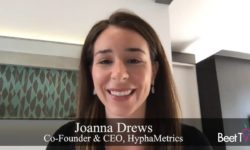Marketers are calling for improved cross-channel measurement of advertising to avoid wasteful media spending and to improve the consumer experience with their brands.
As seen with the recent demand by Marc Pritchard, chief brand officer of consumer goods giant Procter & Gamble, that media channels become more transparent to advertisers in the next year, improved metrics are a must.
Pritchard isn’t alone in asking for improvements that encompass the entire omnichannel universe, which has grown more fragmented as people access content on a wider variety of connected devices. That change in behavior is challenging for all marketers looking for ways to compare traditional media with newer digital platforms.
“[Marketers have] become increasingly impatient with getting ad impression data out of the big digital platforms, and having the ability to ‘de-dupe’ those impressions so they can really understand unduplicated reach and frequency,” Jane Clarke, chief executive and managing director of the Coalition for Innovative Media Measurement (CIMM), said in this interview with Beet.TV. The coalition is a trade group founded in 2009 by television providers, media agencies and advertisers to explore ways to measure U.S. audiences.
Speaking to Jon Watts, an editorial advisor to Beet.TV, Clarke said the increased fragmentation of the media environment is driving a demand for improved measurement.
“It’s becoming more and more urgent as there’s more and more fragmentation and as the current measurement companies can’t catch all the fragmentation,” she said. “Once you start changing measurement and changing currencies in the way cross-platform media is bought and sold, it has huge business implications. It’s not just a technical issue for researchers.”
‘Putting It All Together’
Marketers have access to more viewership data than ever before, but comparing those data sets is a challenge without common standards among the growing number of TV media outlets.
“Even within television and premium video, most people now believe there are so many different data streams from linear to addressable to data-driven linear to VOD to AVOD to OTT to all forms of digital video,” Clarke said. “The challenge is not only getting all that data normalized and standardized, but putting it all together.”
Clarke said the coalition found in a recent study that TV measurement has many pitfalls and potential inaccuracies without a common method of tracking viewership.
“The weird thing in the U.S. is we don’t have an ad measurement system right now. All our television measurement is based on the ‘C3’ rating by Nielsen, which averages all the ads in an entire show, regardless of pod or position,” she said. “That’s starting to fall apart with this whole fragmented world.” Nielsen introduced C3 in 2007 to measure average commercial minutes in live programming and playback by digital video recorders (DVRs) up to three days later.
Despite the challenges in measurement, she foresees improvements as media channels work to meet the demands of marketers. After all, they control billions in media spending.
“Technology and consumers move faster than the standards in the auditing and transparency that follow,” she said. “It will follow because the marketers will demand that all of these new evolving services and sources of data become normalized and standardized and comparable.”














































